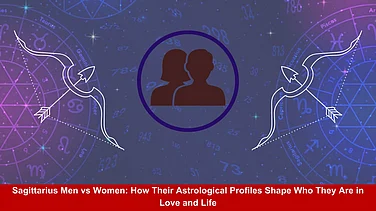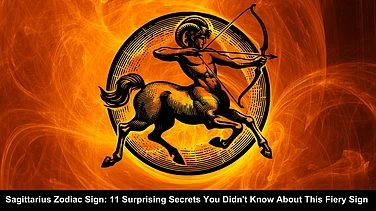India is a country that is well-known for its diverse cultures and traditions, and it is also well-known for its lively festivals that celebrate the rich blend of spirituality, heritage, and harmony that exists within the country. Particularly noteworthy among these is the Durga Puja, which is widely regarded as one of the most gorgeous and widely cherished types of celebration. This all-encompassing manual extends an invitation to you to investigate the intricate fabric of the Durga Puja. It provides insights into the historical roots of the puja, as well as its significance and the various cultural aspects that come together to make it an exceptionally magnificent event.
Durga Puja is celebrated in the month of Aswin, the season of autumn, which is in Bengali known as ‘Sharat’, so it is known as Sharadiya Durga Puja. This is also known as Akal Bodhon; ‘akal’ means untimely and ‘bodhon’ means worship. The word refers to the untimely worship of Maa Durga. Akal Bodhon was initiated by Lord Ram when he worshipped Maa Durga to win the war against Ravana after he abducted Sita Maa.
It is believed that Durga Puja refers to all five days of festivity and these five days are observed as Shashthi, Maha Saptami, Maha Ashtami, Maha Navami and Vijayadashami. According to the religious texts of the Hindus, the festivities of Durga Puja, which include the Chandi Path, should start on the day after Mahalaya Amavasya.
Mahalaya is regarded as one of the most significant occasions. This day signifies the conclusion of Pitru Paksha and the start of Devi Paksha the following day. People honour their ancestors on Pitru Paksha day, which is not seen as the start of any auspicious work.
Durga Puja 2024 Dates:
Panchami: October 8, 2024 (Tuesday)
Shashthi: October 9, 2024 (Wednesday)
Saptami: October 10, 2024 (Thursday)
Ashtami: October 11, 2024 (Friday)
Nabami: October 11, 2024 (Friday)
Dashami: October 12, 2024 (Saturday)
Origin of Durga Puja:
According to historical records, the first Durga Puja festival was held in Bengal in the late 1500s. At that time, zamindars and landowners from Malda and Dinajpur in Bengal were the ones who organised the first Durga Puja event.
However, the first ‘Baro-Yaari’ puja was celebrated in Kolkata in 1832 by Raja Harinath of Cossimbazar, who before that would perform the puja at his native home in Murshidabad between 1824 and 1831.
During their time in India, the British also held Durga Puja, which was done for the first time in 1765 to make their Hindu people happy after they took over Diwani of Bengal. It is also said that John Chips, who was the auditor-general of the East India Company, did Durga Puja at his office in Birbhum. British people taking part in Durga Puja events are known to have gone on until 1840.
In 1910, the first Durga Puja was held in Delhi, which was then the capital of British India. People still celebrate Durga Puja with the same passion in Delhi as they do in Kolkata or any other Bengali area.
Two important parts of the Durga Puja celebrations are the pratima and the pandal. Durga Pratima, along with her four children, Ganesh, Saraswati, Lakshmi, and Kartikeya, is made up of clay. They are all put in beautiful temporary canopies, which are called Pandal.
Many people from different backgrounds enjoy Durga Puja as a show, and it reminds us of a time when this holiday brought everyone together.
Traditions of the Durga Puja Festival:
In Hindu mythology, the event marks the return of Goddess Durga and her children to where she was born. Before the Durga Puja, there is Mahalaya, which is the start of Durga's trip home. People who worship the Goddess start the real puja on "Maha Sashthi," or the sixth day, with a big party to welcome her. The people see Durga's goddess for the first time on this day. During the puja, the "dhakis" play a type of drum called a "dhak" to keep the mood and spirit alive. The "dhak" is connected to the puja and Bengali culture.
The start of "Maha Saptami" is on the seventh day. As part of the ceremony, a banana tree is put into the water on this day, just before dawn. After the ritual bath, the tree, which is called "Kola Bou" in Bengali, is covered in a saree, usually one with red borders, and put on Ganesha's right side. This is meant to show that "Kola Bou" is Ganesha's bride. However, different culture revisionists and historians have different ideas about this. Some think that "Kola Bou" is another name for Durga. In this way, they disprove the idea that "Kola Bou" is Ganesha's bride.
"Kola Bou" could also be seen as a picture of nine different types of plants coming together to form a holy complex. Priests tie a group of eight plants to the trunk of the banyan tree before the ceremony. "Kola Bou," which is made up of nine different leaves.
"Maha Ashtami" is the eighth day of the puja, and it is thought that the Goddess beat "Mahisasura" on this day. "Anjali" prayers are said, and feasts are held in different places. On this day, kichdi and other tasty foods are made.
The ninth day of Durga puja is known as "Maha Navami." Maha Navami starts as soon as "Sandhi Puja" is done. As a closing rite, Maha Aarti is done. There are often long lines on this day because so many people want to take part in "Maha Aarti."
The last day of Durga Puja is the tenth day, also known as "Maha Dashami." On this day, Durga and the other gods are immersed in the Ganga River. Before visarjan, all the married women smear vermillion on each other's faces as part of "Sindoor Khela." Many people walk in long lines on the day of baptism, also known as "Visarjan." To honour the puja spirit, people dance and cheer on the road. It is common for people to visit family members' homes to wish them "Bijoya Dashami" after the soaking.



















